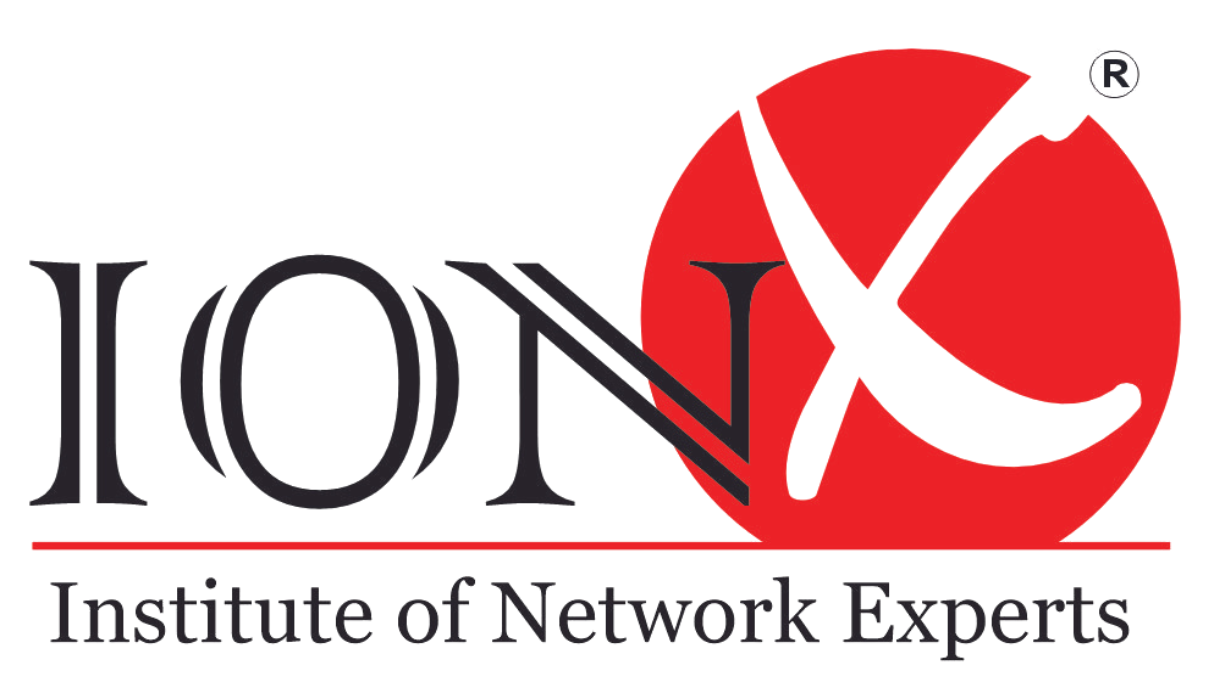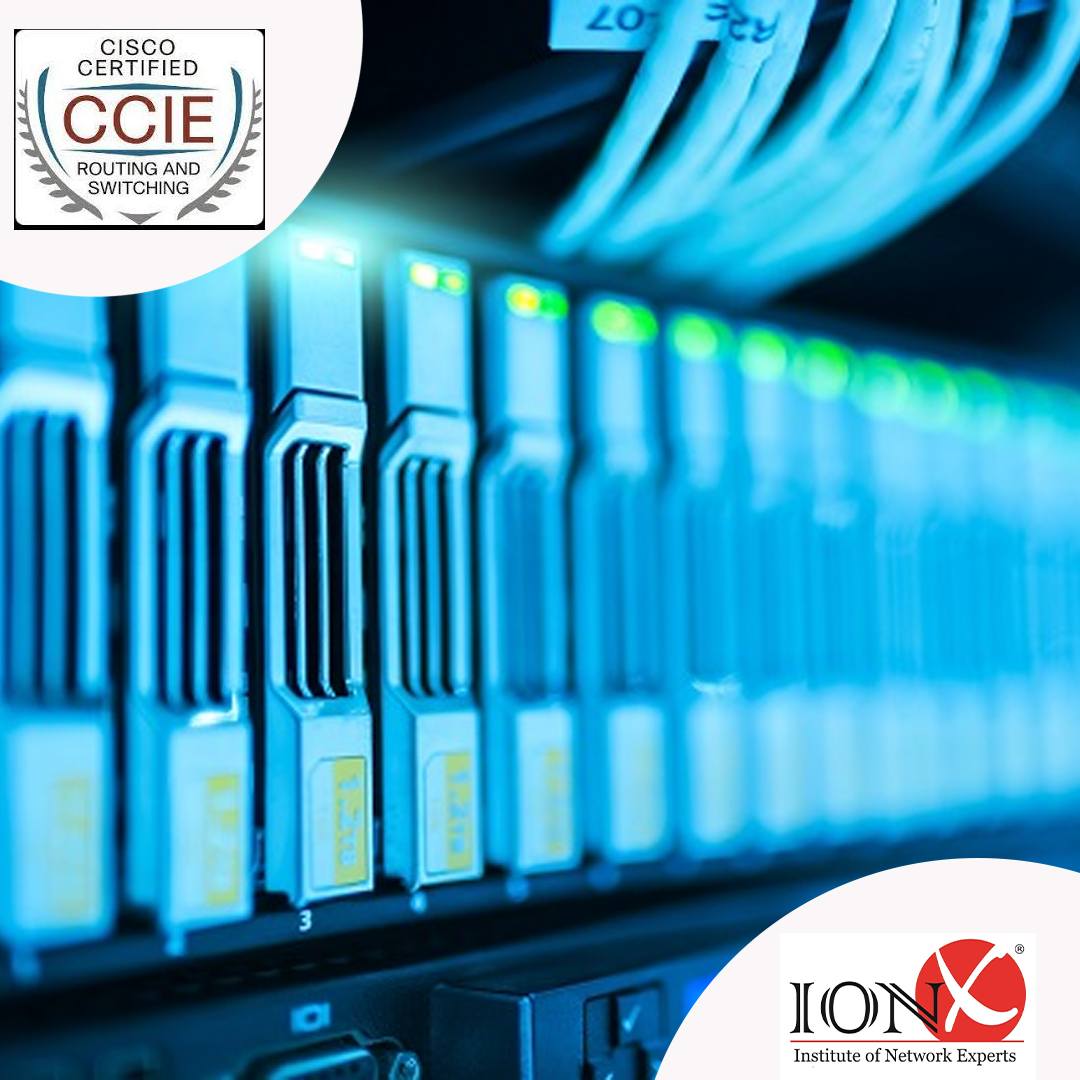CCIE Routing and Switching Training
"CCIE R&S certifies and validates the skills required by experts for configuring and troubleshooting complex and converged network infrastructure. CCIE Routing and switching training bundle at IONX offers cost effective and renowned training resources to meet the industry standards and make the students market fit."
The expert level CCIE Routing and Switching certification recognizes ones knowledge and experience in network infrastructure technologies. The training at IONX allows the participants to work on the Racks, real time CISCO devices. CCIE R&S ensures the trainees to gain technical expertise to help improve network uptime, increase user productivity and provide for business agility in the organization they get employed for.
The Cisco Certified Internetwork Expert (CCIE) Routing and Switching certification was introduced to assist the industry in identifying the top stratum of internetworking experts worldwide and to assess Expert-level infrastructure network design skills worldwide. CCIE is a reputed and most prestigious certification one can ever possess in the field of networking domain.
Enroll for CCIE Enterprise Traning Free Demo Class
Request Demo Class
₹69999/- | $1350/- Duration: 240 Days
[Note: Prices displayed are after Discount and includes GST]
Syllabus of CCIE Enterprise Course in Ahmedabad
Switch administration
Managing MAC address table
Errdisable recovery
Layer 2 protocols - CDP, LLD, UDLD
VLAN technologies
Access ports
Trunk ports (802.1Q)
Native VLAN and Manual VLAN pruning
Normal range and extended range VLANs
Voice VLAN, VTP, Etherchannel
EtherChannel Misconfiguration Guard
Spanning- Tree Protocol - PVST+, Rapid PVST+, MST
Switch priority, port priority, path cost, STP timers
PortFast, BPDU Guard, BPDU Filter Loop Guard, Root Guard
Administrative distance
VRF Concepts
Static/Default routing
Policy Based Routing
VRF aware routing with any routing protocol
Route filtering with any routing protocol
Manual summarization with any routing protocol
Redistribution between any pair of routing protocols
Routing protocol authentication
Bidirectional Forwarding Detection
Adjacencies, Best path selection
RD, FD, FC, successor, feasible successor
Classic Metrics and Wide Metrics
Operations - General operations
EIGRP load-balancing
IP FRR (single hop)
Leak-map with summary routes
EIGRP stub with leak map
Adjacencies
Network types, area types
Path preference
Operations
Optimization, convergence and scalability
Metrics
LSA throttling, SPF tuning, fast hello
LSA propagation control (area types)
Stub router
Loop-free alternate
Prefix suppression
IBGP and EBGP peer relationships
Peer-group/update-group, template
Active, passive States, Timers
Dynamic neighbors
AS numbers1.5.a vi Private AS
Path selection Atributes & manipulation
Load-balancing
Routing policies
Route Filtering
Standard and extended communities
Multi-homing & AS path manipulations
Multipath, add-path
Soft reconfiguration, Route Refresh
Layer 2 multicast
IGMPv2, IGMPv3
IGMP Snooping, PIM Snooping, IGMP Querier & Filter
Reverse path forwarding check
PIM Sparse Mode & Dense Mode
Static RP, BSR, AutoRP
Group to RP Mapping
Bidirectional PIM
Source-Specific Multicast
Multicast boundary, RP announcement filter
PIMv6 Anycast RP, IPv4 Anycast RP using MSDP
Multicast multipath
Cisco SD Access
Design a Cisco SD Access solution
Underlay network (IS-IS, manual/PnP)
Overlay fabric design (LISP, VXLAN, Cisco TrustSec)
Fabric domains (single-site and multi-site using SD-WAN transit)
Cisco SD Access deployment
Cisco DNA Center device discovery and device management
Add fabric node devices to an existing fabric
Host onboarding (wired endpoints only)
Fabric border handoff and Segmentation
Macro-level segmentation using VNs
Micro-level segmentation using SGTs (using Cisco ISE)
Assurance & Monitoring and troubleshooting
Orchestration with zero-touch provisioning/Plug-And-Play
OMP, TLOC, Configuration templates
Localized policies (only QoS)
Centralized policies & Application Aware Routing Topologies
Operations
Label stack, LSR, LSP, LDP
MPLS ping, MPLS traceroute
L3VPN, PE-CE routing
MP-BGP VPNv4/VPNv6
Extranet (route leaking)
Troubleshoot DMVPN Phase 3 with dual-hub
NHRP, IPsec/IKEv2 using pre-shared key
Per-Tunnel QoS & Identify use-cases for FlexVPN
Site-to-site, Server, Client, Spoke-to-Spoke
IPsec/IKEv2 using pre-shared key
MPLS over FlexVPN
Control plane policing and p protection
AAA
Network Security
Switch security features
VACL, PACL
Storm control
DHCP Snooping, DHCP option 82
IP Source Guard, Dynamic ARP Inspection, DHCP Snooping
Port Security
Private VLAN
Router security features
IPv6 Traffic Filters
IPv4 Access Control Lists
Unicast Reverse Path Forwarding
IPv6 infrastructure security features
RA Guard, DHCP Guard and Binding table
Device tracking
ND Inspection/Snooping
IEEE 802.1X Port-Based Authentication
Device roles, port states
Authentication process & Host modes
SSH, SCP, RESTCONF, NETCONF
Console and VTY, SNMP & Logging
Local logging, syslog, debugs, conditional debugs
End to end L3 QoS using MQC
DiffServ, CoS and DSCP Mapping
Classification
Network Based Application Recognition (NBAR)
Marking using IP Precedence, DSCP, CoS
Policing, shaping
Congestion management and avoidance
HQoS, Sub-rate Ethernet Link
First-Hop Redundancy Protocols
HSRP, GLBP, VRRP
Redundancy using IPv6 RS/RA
Network Time Protocol- Master, client
Authentication
DHCP on Cisco IOS Client, server, relay
SLAAC/DHCPv6 interaction
Stateful, stateless DHCPv6
DHCPv6 Prefix Delegation
IPv4 Network Address Translation
Static NAT, PAT Dynamic NAT, PAT
Policy-based NAT, PAT VRF aware NAT, PAT
IOS-XE VRF-Aware Software Infrastructure (VASI) NAT
IP SLA, ICMP probes
Tracking object
Flexible Netflow
Traffic capture
SPAN, RSPAN, ERSPAN
Embedded Packet Capture
Cisco IOS-XE troubleshooting tools
Packet Trace & Conditional debugger (debug platform condition)
Data encoding formats
JSON, XML
Automation and scripting
EEM applets
Guest shell
Linux environment
Python module
EEM Python module
Programmability
Interaction with vManage API
Python requests library and Postman
Monitoring endpoints
Configuration endpoints
Interaction with Cisco DNA Center API
HTTP request (GET, PUT, POST) via Python requests library and Postman
Interaction with Cisco IOS XE API
Via NETCONF/YANG using Python ncclient library
Via RESTCONF/YANG using Python requests library and Postman
Deploy and verify model-driven telemetry
Configure on-change subscription using gRPC





